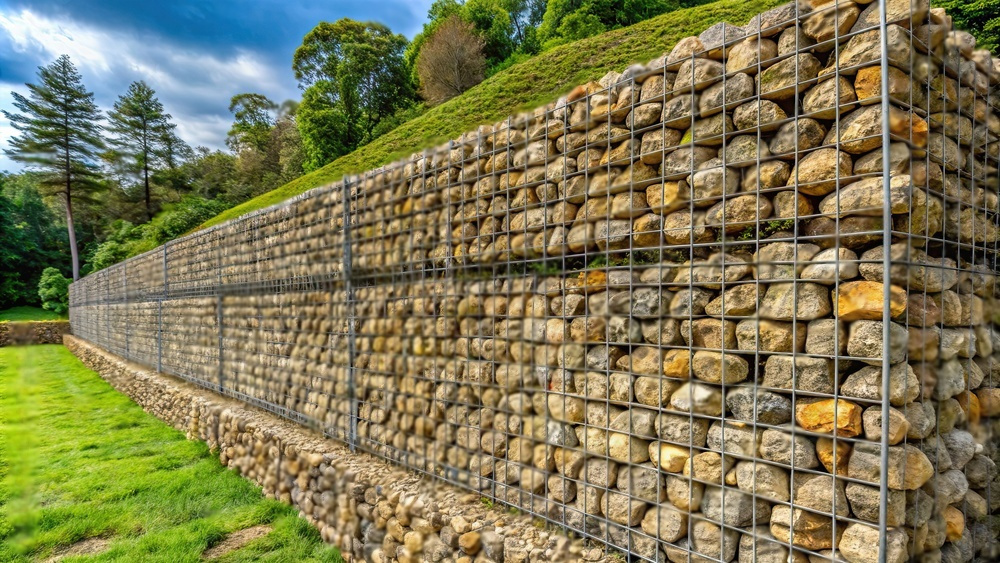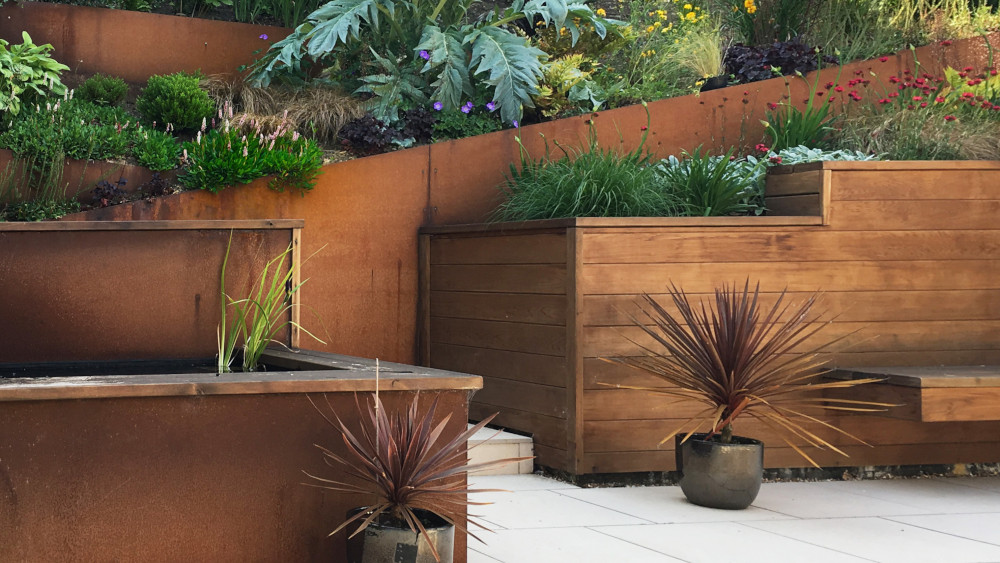If you own a sloped property in New Zealand, you may already be aware of the challenges that come with maintaining a beautiful and functional landscape on uneven ground. Sloped landscapes are prone to soil erosion, water runoff issues, and limited usable space. Retaining walls offer a practical and visually appealing solution for addressing these issues, transforming your property into a more accessible and stable outdoor area. This comprehensive guide explores how retaining walls can protect your sloped landscape, their benefits, types, and key considerations for installation and maintenance. Whether you’re looking to prevent erosion or enhance the aesthetics of your landscape, retaining walls are a valuable addition to any sloped property.
Why Use Retaining Walls for Sloped Properties?
Retaining walls are designed to hold back soil on uneven terrain, creating level areas and preventing the natural downward movement of soil. On sloped properties, retaining walls provide both structural support and aesthetic appeal, allowing homeowners to create usable outdoor spaces while protecting their land from erosion.
Key reasons to consider retaining walls on a sloped property include:
- Erosion Control: Slopes are vulnerable to soil erosion, especially during heavy rainfall. Retaining walls help stabilize the soil, preventing it from washing away and protecting the foundation of your home and other structures.
- Increased Usable Space: Retaining walls create flat terraces, making it possible to incorporate garden beds, patios, or even play areas on previously unusable terrain.
- Enhanced Aesthetic Appeal: Well-designed retaining walls can add visual interest to your landscape, enhancing curb appeal and property value.
- Improved Drainage: With proper drainage systems, retaining walls help redirect water runoff, preventing puddling and erosion in other areas of your property.
Types of Retaining Walls for Sloped Properties
There are various types of retaining walls, each with unique characteristics and benefits suited to different landscapes and design preferences. Here are some common types used for sloped properties in New Zealand:
- Gravity Retaining Walls
Gravity walls rely on their mass to hold back soil and are typically built using materials like stone, concrete, or large blocks. They are ideal for lower-height walls and are often chosen for their natural look. Gravity walls are a great option for New Zealand landscapes, where blending with natural surroundings is often a priority.
- Cantilever Retaining Walls
Cantilever walls are reinforced concrete walls with a unique “L” or “T” shape that extends into the soil for additional support. These walls can withstand higher loads and are ideal for taller structures. They provide excellent stability on steep slopes but require a solid foundation, which may increase installation time and cost.
- Segmental Retaining Walls (SRWs)
Segmental retaining walls use interlocking blocks or bricks, providing flexibility in design and excellent drainage. SRWs are easy to install and are especially suitable for small to medium-sized walls. They work well for creating tiered terraces, making them a versatile choice for residential properties.
- Timber Retaining Walls
Timber walls are made from treated wood and are a popular choice for shorter walls and garden beds. While timber walls may not last as long as stone or concrete walls, they offer a more rustic look and are an economical option for homeowners. Regular maintenance is essential to prevent wood rot, especially in New Zealand’s wet climate.
- Rock or Boulder Retaining Walls
Rock retaining walls provide a natural, rugged look that blends seamlessly with New Zealand’s landscape. These walls are constructed by stacking large rocks or boulders, which can withstand significant pressure and provide good drainage. They are perfect for informal designs and are particularly popular in rural or native-styled gardens.
- Gabion Walls
Gabion walls are made by filling wire cages with rocks, stones, or other materials. They’re durable, eco-friendly, and allow water to flow freely through them, which reduces erosion pressure. Gabion walls offer a unique, industrial look that fits well with modern landscapes.

Steps for Building a Retaining Wall on a Sloped Property
Constructing a retaining wall on a slope requires careful planning and proper construction techniques to ensure its effectiveness and longevity. Here’s a step-by-step outline for building a retaining wall on a sloped property:
Step 1: Plan and Design
- Assess the Site: Evaluate the slope, soil type, and any drainage requirements. This assessment will help determine the height and type of wall you need.
- Choose a Design: Decide on the style, materials, and layout of the wall. Consider how the retaining wall will complement the rest of your landscape.
- Consult Local Regulations: Check with local authorities regarding building codes and regulations for retaining walls. Walls over a certain height may require permits or professional engineering.
Step 2: Prepare the Site
- Clear the Area: Remove any vegetation, rocks, or debris from the site. It’s essential to have a clean, stable base to build on.
- Level the Ground: Dig a trench where the wall will sit. This trench should be deep enough to accommodate the base materials, providing stability for the wall.
Step 3: Install a Solid Base
- Add Base Material: Fill the trench with a layer of compacted gravel or crushed stone. This base material will help support the wall and improve drainage.
- Compact the Base: Use a tamper or plate compactor to compact the base material. A solid, well-compacted base is crucial to the stability of the wall.
Step 4: Build the Wall
- Lay the First Course: Start with the bottom layer of blocks or stones, ensuring they are level. This first layer sets the foundation for the rest of the wall, so take your time to get it right.
- Continue Laying Courses: Stack each subsequent layer according to your chosen design. If you’re using interlocking blocks, follow the manufacturer’s instructions for staggered layering.
- Backfill as You Go: As you build, backfill the wall with gravel or soil to provide additional support. Backfilling also helps with drainage, reducing pressure on the wall.
Step 5: Ensure Proper Drainage
- Install Drain Pipes: Place perforated drain pipes behind the wall to direct excess water away from the structure. Proper drainage is essential to prevent water from accumulating behind the wall, which could lead to structural issues.
- Add Weep Holes: For taller walls, include weep holes to allow water to escape from behind the wall. This reduces hydrostatic pressure on the wall, increasing its lifespan.

Maintaining Your Retaining Wall
Once your retaining wall is in place, routine maintenance will keep it looking and functioning at its best. Here are some essential maintenance tips:
- Inspect Regularly: Check for signs of movement, cracks, or bulging, especially after heavy rains. Addressing these issues early can prevent larger structural problems.
- Clear Debris and Vegetation: Remove leaves, dirt, and plants that may grow on or near the wall. Vegetation can compromise the stability of the wall by trapping moisture.
- Check Drainage Systems: Ensure that drain pipes and weep holes are clear and functioning. Blocked drainage can lead to water buildup, weakening the wall over time.
- Repair Any Damage: If you notice any cracks or loose stones, repair them promptly. Small repairs can prevent more extensive and costly damage down the road.
Benefits of Retaining Walls on Sloped Properties
Installing a retaining wall on a sloped property provides numerous benefits that go beyond soil retention:
- Enhanced Curb Appeal: A well-constructed retaining wall adds structure and visual interest to your landscape, increasing your property’s appeal and value.
- Increased Functional Space: Terracing with retaining walls creates usable, flat areas that can be utilized for gardening, seating, or outdoor entertaining.
- Improved Water Management: Retaining walls with proper drainage help manage water runoff, reducing the risk of erosion and flooding in other areas of your property.
- Environmentally Friendly: By reducing erosion, retaining walls help protect the environment by maintaining soil stability and preventing sediment from entering waterways.
Choosing a Retaining Wall Builder in New Zealand
For larger retaining walls or complex projects, it’s often best to work with an experienced retaining wall specialist. Retaining walls require precise engineering and expertise, particularly on sloped properties where soil stability is a concern. When selecting a builder, consider their experience, past projects, and understanding of New Zealand’s specific landscape and environmental requirements.
Conclusion
Retaining walls are a valuable investment for sloped properties, providing both practical and aesthetic benefits. From preventing erosion to creating beautiful terraces, retaining walls transform challenging landscapes into functional and attractive outdoor spaces. Whether you’re looking to protect your property from soil erosion or add more usable space for gardens and entertaining areas, retaining walls offer a versatile solution.
Ready to Protect Your Sloped Property? Contact Retaining Walls by LandscapingHQ!
If you’re considering adding retaining walls to your landscape, Retaining Walls by LandscapingHQ is here to help. Our expert team specializes in designing and constructing durable, visually appealing retaining walls tailored to New Zealand’s unique terrain. Get in touch today to discuss your project and transform your sloped property into a stunning and functional outdoor space.

